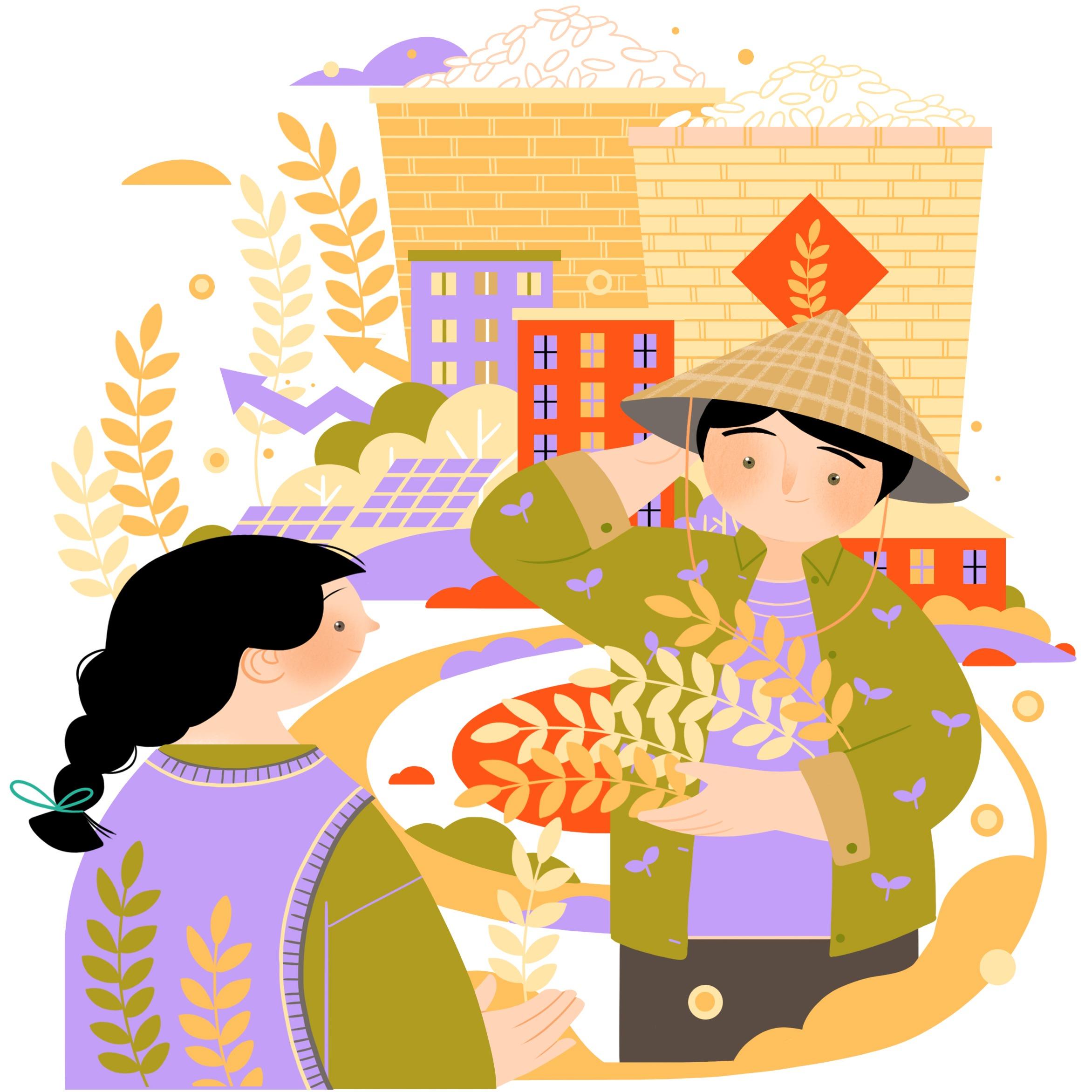 (LI MIN / CHINA DAILY)
(LI MIN / CHINA DAILY)
China's food security is not only a vital part of national security, but also key to rural vitalization. To achieve China's modernization, the nation has to ensure food security first.
The Central Rural Work Conference in 2022 and the No 1 central document in 2023 both proposed to "formulate implementation plans for a new round of actions to increase China's grain production capacity by 50 million tons". And before that, in 2022, China's grain output managed to remain above the goal of 650 million tons for the eighth consecutive year.
Why does China continue to address the importance of increasing food output. The move raises three questions.
First, why does China set such a target? The move is aimed at strengthening China's food security, even though the country's grain production has been increasing since the launch of reform and opening-up. For example, it rose from 546.41 million tons in 2010 to 686.53 million tons in 2022 — an increase of 140.12 million tons. But China's food imports, too, have been increasing during the period, although it had been a net exporter of grains for years before 2010. For two years in a row, in 2021 and 2022, China's net grain imports exceeded 50 million tons, with soybean imports increasing from 50 million tons to more than 90 million tons, reaching a peak of over 100 million tons in 2020.
The main reason for this is the sustained and substantial increase in consumers' income, which has driven the demand for meat, eggs, seafood and dairy products. This in turn has raised the demand for feed. In 2022, China's net agricultural product imports reached $137.8 billion, of which grain (mainly cereals, soybean and soybean meal) accounted for 60 percent.
Second, what are the grain varieties whose production should be increased? Grains have many uses, including direct consumption (mainly rice and wheat), feed (mainly corn and soybean), and other food and nonfood use.
Official data suggest the per capita consumption of direct grain has been declining, while the consumption of animal-based foods has been increasing. In fact, China is self-sufficient in rice and wheat, and can meet the domestic demand for the staples, as the per capita production of rice and wheat is more than 240 kilograms while the per capita consumption of the two grains is less than 120 kg. Yet large amounts of rice and wheat are imported (6 million tons of rice and 10 million tons of wheat were imported in 2022), mainly because they are of better quality.
Also, with the per capita consumption of rice and wheat continuing to decline, along with the population, the total demand for rice and wheat will also decrease. This means the grains most in demand will be those used as feed, that is, mainly corn and soybean.
The primary reason for increasing grain production by 50 million tons is to raise the output of feed grain, especially corn, because soybean production has limited potential for growth due to low yield, as even the central document proposes to implement a "corn yield increase project".
Third, how can the increased grain output target be achieved? To meet the target, the authorities need to take various effective measures, with the most crucial being land, technology and production organization.
In terms of land, cultivable land is limited. But there is huge potential for improving production quality. China's cultivable land area accounts for 9 percent of the world's total but produces 21 percent of the world's grains. Since cultivable land is likely to decrease in the future, the only option the authorities have to increase total output is to further improve the yield.
To achieve this, it is necessary to improve the soil fertility, including leveling and connecting farmlands, increasing soil nutrients, and improving irrigation and drainage. But despite the overall rapid progress, there are still significant gaps in key agricultural technologies. For instance, the yields of China's major crops are basically higher than the world average, but there is still a considerable gap with countries that use advanced agricultural technologies.
Therefore, improving yield by employing advanced technologies is important for all products. Increasing the yield of any crop can free more area for growing feed and other grains. For example, from 1992 to 2022, China's cotton yield per mu (0.06 hectare) doubled and total cotton production increased by 33 percent even though the area used for cotton farming decreased by 56 percent (over 57 million mu). If the reduced cotton growing area were used for growing corn, it could raise total corn output by 24 million tons.
China's corn yield is less than 60 percent of the United States'. If China can raise it to 70 percent of the US level, total production will increase by 65 million tons based on the current planting area, which exceeds the goal of increasing grain output by 50 million tons.
The central document not only proposes to implement "the corn yield increase project" but also emphasizes the importance of "strengthening agricultural technology and equipment support" and "accelerating the industrialization of corn and soybean biotechnology breeding", which means genetically modified corn and soybean technology are likely to be used to raise output.
In terms of production organization, different methods need to be adopted to expand the scale of operation which can enable advanced yield-increasing technologies to be used.
In the past 20 years, due to the continuous increase in labor cost, the speed of China's agricultural mechanization has been accelerating, and through various ways, including leasing of land and cooperative management, grain production too has been growing, especially in Northeast, Northwest and North China and the Yangtze River middle and lower plains. This trend will continue, facilitating the increasing use of advanced technologies in agriculture to increase grain output.
The author is former president of the China Agricultural University.
The views don't necessarily represent those of China Daily.



